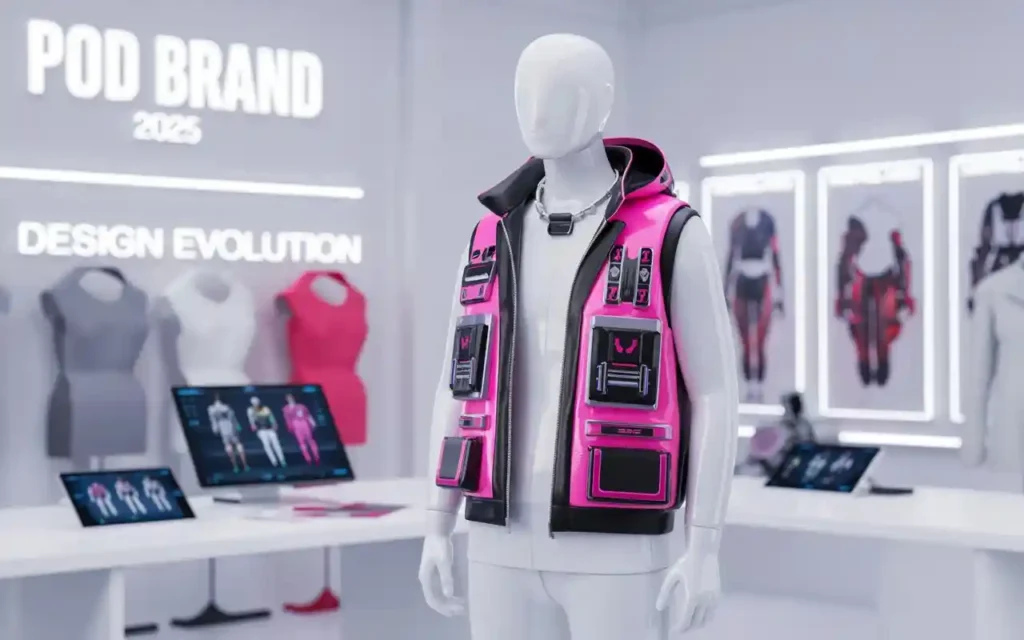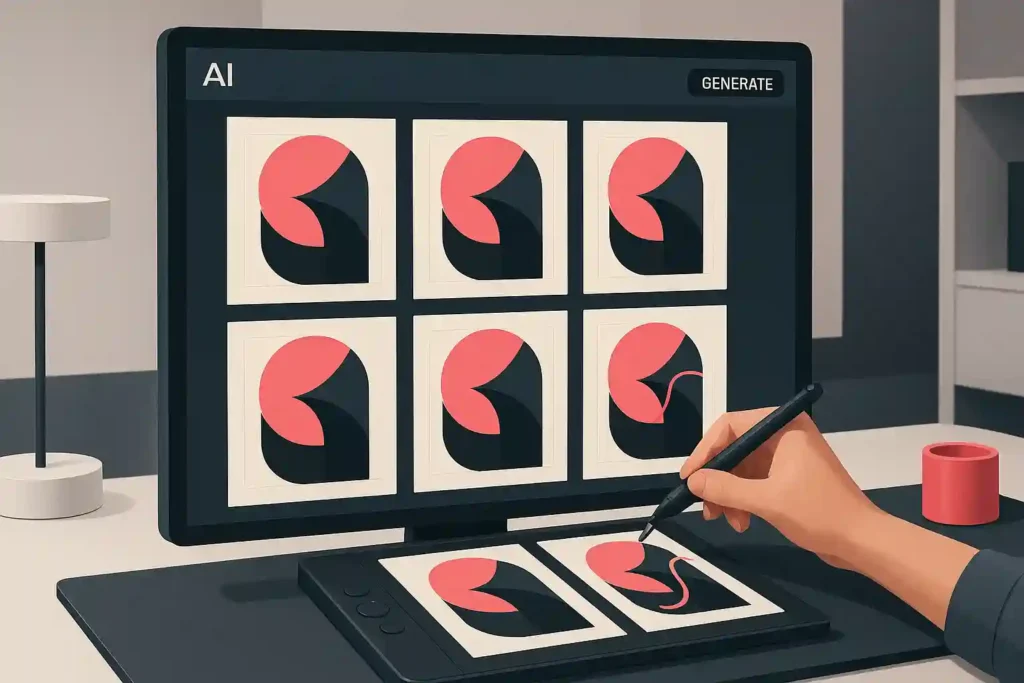Artificial Intelligence (AI) has dramatically changed the landscape of print-on-demand (POD) design. With AI-powered design tools becoming widely accessible, businesses can create unique, high-quality designs quickly and at lower costs. However, while AI offers numerous benefits, an over-reliance on this technology poses risks that can negatively impact creativity, brand identity, and overall product quality. In this blog post, we’ll explore the potential pitfalls of becoming too dependent on AI in POD design, provide strategies for balancing technology with human creativity, and discuss best practices for sustainable design processes.
Understanding AI in Print-on-Demand Design
AI-powered design tools such as Midjourney, DALL·E, and DeepArt have revolutionized how POD products are created. These tools allow designers—regardless of their technical skill—to generate impressive artwork from simple text prompts. As a result, businesses benefit from rapid prototyping, instant design iterations, and scalability.
Benefits of AI in POD Design
Speed and Efficiency: AI can generate multiple design variations in a matter of seconds, significantly reducing design turnaround time.
Cost-Effective Production: With AI, there’s less need for expensive design software or professional designers, which lowers initial production costs.
Consistency: AI helps maintain a uniform aesthetic across different products, ensuring brand consistency.
Innovation: AI-powered creative platforms push the boundaries of conventional design, introducing fresh ideas and trends.
While these advantages are compelling, relying too heavily on AI can lead to challenges and unintended consequences.
The Hidden Dangers of Over-Reliance on AI
As businesses integrate AI into their design workflows, it is important to recognize and mitigate the risks that come with over-dependence on technology.
Loss of Human Touch
One significant risk is the potential loss of human creativity. AI tools, although advanced, can sometimes produce designs that feel generic or lack the personal flair that resonates with an audience. Human designers bring intuition, cultural nuance, and innovation that AI currently cannot fully replicate. Over-reliance on AI can lead to homogenized designs that may fail to differentiate your brand in a competitive market.
Quality and Consistency Issues
While AI can provide consistency, it might also inadvertently produce repetitive or error-prone designs if the prompts are not varied or updated regularly. Over time, this can result in a portfolio that lacks diversity and creative evolution. Additionally, the quality of AI-generated output is only as good as the input it receives. Poorly constructed prompts can result in designs that miss the mark in terms of quality and detail.
Intellectual Property Concerns
Another area of concern is the potential for intellectual property (IP) infringement. As AI designs are generated based on vast datasets of existing artworks and styles, there is a risk that the output may unintentionally replicate copyrighted designs. This can lead to legal challenges and damage your brand’s reputation if not managed carefully.
Reduced Critical Oversight
Automated design processes might lead to a false sense of security. Relying solely on AI-generated outputs without thorough human review increases the risk of errors slipping through. It is essential to maintain a robust process for reviewing and refining AI-generated designs to ensure they align with brand guidelines and quality standards.

Balancing AI with Human Creativity
To harness the full potential of AI in POD design while mitigating its risks, businesses must strike a balance between automation and human creativity.
Encourage Collaborative Workflows
Integrate AI tools as part of a broader creative process that involves human oversight. Use AI to generate initial design concepts, but then let experienced designers refine and personalize these outputs. This collaborative approach helps preserve the unique artistic touch and ensures that designs are both innovative and authentic.
Regularly Update and Refresh Prompts
Avoid design stagnation by constantly updating the prompts you feed into AI tools. Experiment with different keywords, artistic styles, and techniques to produce varied outputs. Regular iteration not only keeps the designs fresh but also helps prevent the pitfalls of repetitive patterns that can occur with over-reliance on static prompts.
Establish a Thorough Review Process
Create checkpoints within your design workflow for human review. Ensure that every AI-generated design is evaluated for quality, originality, and compliance with intellectual property laws. This level of oversight prevents potential quality issues and helps maintain consistent brand identity.
Invest in Training and Tools for Designers
Empower your creative team with education on both AI tool usage and traditional design principles. Workshops, online courses, and hands-on training sessions can help designers understand the limitations and strengths of AI, thus enabling them to use these tools more effectively in a complementary fashion.
Future Considerations for AI in POD Design
Looking forward, the role of AI in POD design will continue to evolve. As the technology advances, we can expect improvements in the accuracy, creativity, and usability of AI design tools. However, businesses must remain vigilant about the potential risks:
Innovation vs. Imitation: As AI evolves, it will be important to continually assess whether the technology is driving innovation or inadvertently causing design imitation.
Ethical Considerations: Companies should be mindful of ethical issues related to copyright, data privacy, and the use of AI-generated content.
Sustainable Creative Practices: Balancing AI efficiency with ongoing creative development will be crucial to avoid design fatigue and maintain brand integrity.
By staying informed about the latest trends in AI and design, and by continuously refining your creative processes, your POD business can benefit from AI innovation without compromising on quality or originality.

Conclusion
AI-powered design tools present an incredible opportunity for the print-on-demand industry, offering efficiency, innovation, and cost savings. However, over-reliance on these technologies can lead to homogeneous designs, quality issues, and even legal challenges regarding intellectual property. To truly succeed in POD, it is vital to blend the strengths of AI with the irreplaceable creativity and critical insight of human designers.
By implementing collaborative workflows, regularly updating design prompts, and ensuring thorough quality oversight, businesses can harness the power of AI while maintaining a vibrant, unique creative voice. As you integrate AI into your POD operations, remember that it is a tool to amplify your creativity—not replace it. Embrace the balance, invest in continuous learning, and watch your POD business evolve into a hub of innovation and artistic excellence.
FAQs
What are the risks of using AI too much in my design process?
Over-reliance on AI in print-on-demand design refers to depending too heavily on automated tools for creating artwork, which can sometimes lead to generic, uninspired designs, a loss of human creativity, and potential quality issues in the final products.
How do I find suppliers for print on demand products?
The risks include reduced originality, homogenized designs, potential intellectual property conflicts, and a decreased ability to connect with your target audience through authentic, human-driven creativity. Over-dependence can also lead to quality control problems if automated outputs are not carefully reviewed.
Can AI-generated designs lead to copyright or IP issues?
Yes, AI-generated designs may inadvertently replicate existing artworks or styles, leading to potential copyright concerns. It’s essential to review and customize AI outputs and ensure that your designs do not infringe on any copyrighted content.

